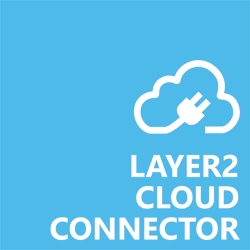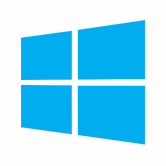FILE SERVER DATA INTEGRATION
Synchronize your documents on traditional file servers or NAS with Microsoft Office 365, SharePoint, or OneDrive for Business by using the Layer2 Cloud Connector.
Close gaps with SharePoint and Office 365 out-of-the-box document synchronization, e.g. regarding support of network shares, the number of files allowed, file types allowed, file naming conventions, central management, and more.
Safe time by combining your data automatically in the background and synchronizing your File Server data one-way or two-way locally or in the cloud.
Synchronization
Work offline with no restrictions, or in the corporate office with increased performance and without internet bandwidth limitations - but also online from home or while traveling.
Migration
Even easier: Use our own customized providers for common systems. Many more vendor-specific or 3rd party ADO.NET data providers are supported as well.
Integration
Share your files between more than 150 apps. The tool runs as a Windows Service locally in your network, or on your own Azure Virtual Machine.
Backup
A simple synchronization can provide a local backup of the cloud-based files, you can archive files using common backup tools.
Learn how easily the data integration of File Server works with the Layer2 Cloud Connector.
CONNECT YOUR file server STEP-BY-STEP
Contents
sales@layer2.pro;" this property should describe the user you wish to connect to SharePoint to.
Enter the password that belongs to the user account used in the connection string into the Password field. Save your changes by using the right-hand pane option Save Changes.
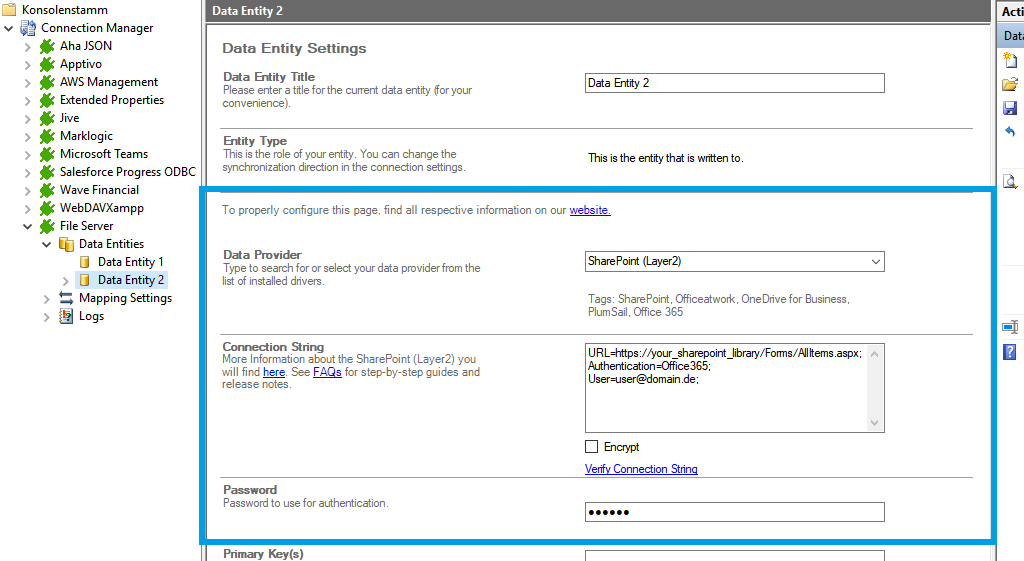
In the next step, we will configure our mapping settings. Click on the Mappings option on the left-hand pane. If your fields from SharePoint are named identical to the fields from your source system, the Enable Auto Mapping option will match those columns. Disabling this option allows you to match your columns as needed. We enabled auto-mapping in our setup. Save your changes by using the right-hand pane option Save Changes.
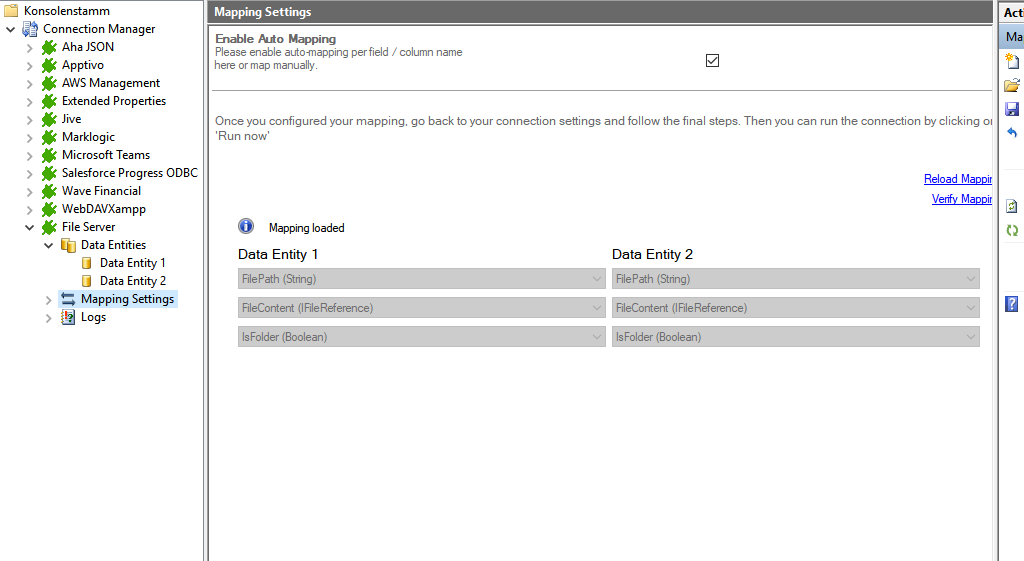
2.4. Running your connection
To run your connection switch back to the main connection configuration node and use the Run Now Button located on the bottom of the setup page. The Run Synchronization Toolbox will also display the synchronization process.
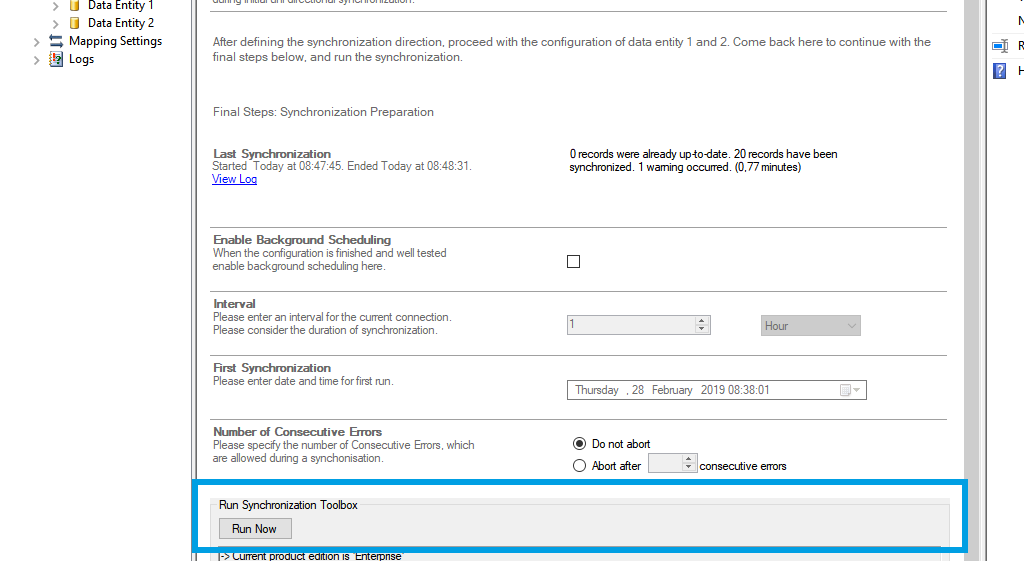
Below is a data preview of the information we have accessed in our source entity:
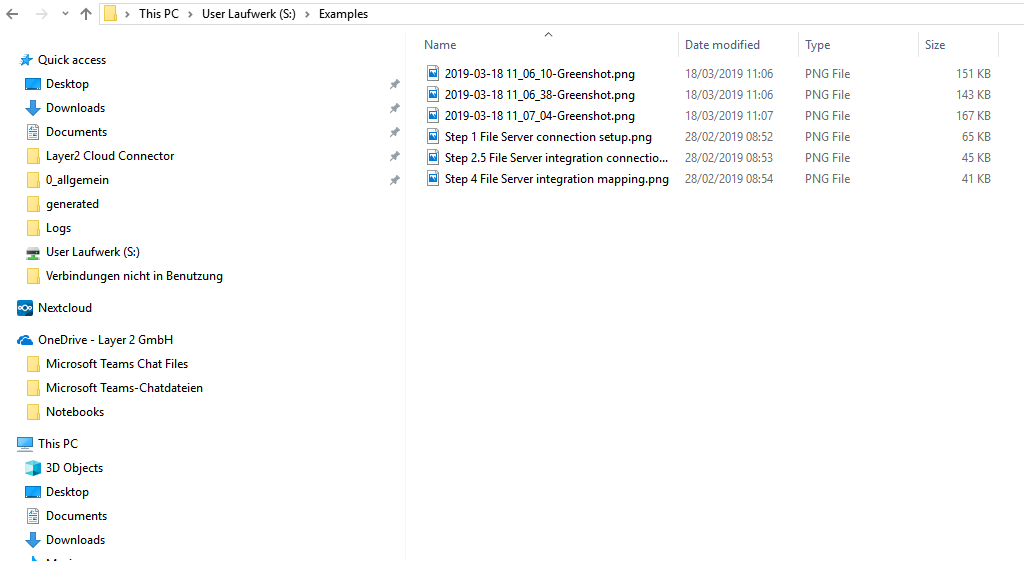
This will be the result in our SharePoint Online library after our initial successful synchronization:
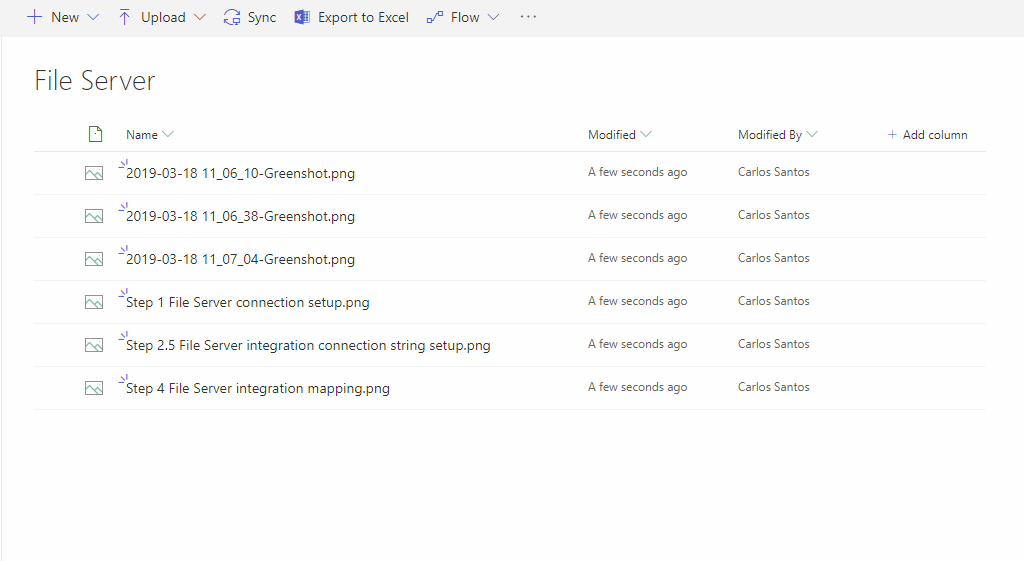
If you want to use a bi-directional syncronization, you can now switch your connection directon after our first initial synchronization run finished successfully. After adjusting the direction, you should check your Mappings settings again because some systems might include read-only columns that cannot be mapped directly.
We also recommend to choose a Conflict Resolution that matches your enviroments needs. You can find out more about the different conflict resolutions in our Layer2 Cloud Connector User Documentation.
3. Hints and known issues
3.1. Connection direction
As far as tested, this connection supports uni-directional as well as bi-directional synchronizations.
3.2 Bandwidth
Take care about bandwidth limitations and Office 365 throttling, especially for the first sync. Estimations are displayed if using the toolbox for first sync. Estimations can change during the sync process, stay patient. You can stop and restart the sync whenever you want.
3.3 Limit of files
While there is no hard limit for the amount of files to sync, keep the number of documents per library (connection) as low as possible. To keep 100.000 documents in sync should not be problem, a powerful configuration can do much more. But consider the SharePoint / OneDrive limitations, and your Office 365 plan.
3.4 SharePoint list view threshold
ote about the SharePoint list view threshold (above 5.000 / 20.000 documents per library). This is not an issue for the sync - but could be an issue for some SharePoint features and apps. Users will still be able to page through a library, use search to find specific files. There can be issues with using specific views, filters, grouping etc. See Microsoft documentation for more details.
3.5 UNC notation
If you are using a source path similar to H:\myPath and got a "not found" error, please make use of UNC notation, such as \\myServer\myPath.
3.6 Domain account
Note that the sync is processed by the Layer2 Windows Service. If it runs under a local service account, it will not have access to shared drives. You can run under a domain account to fix this issue. In this case you don't need to give access data in the connection string.

